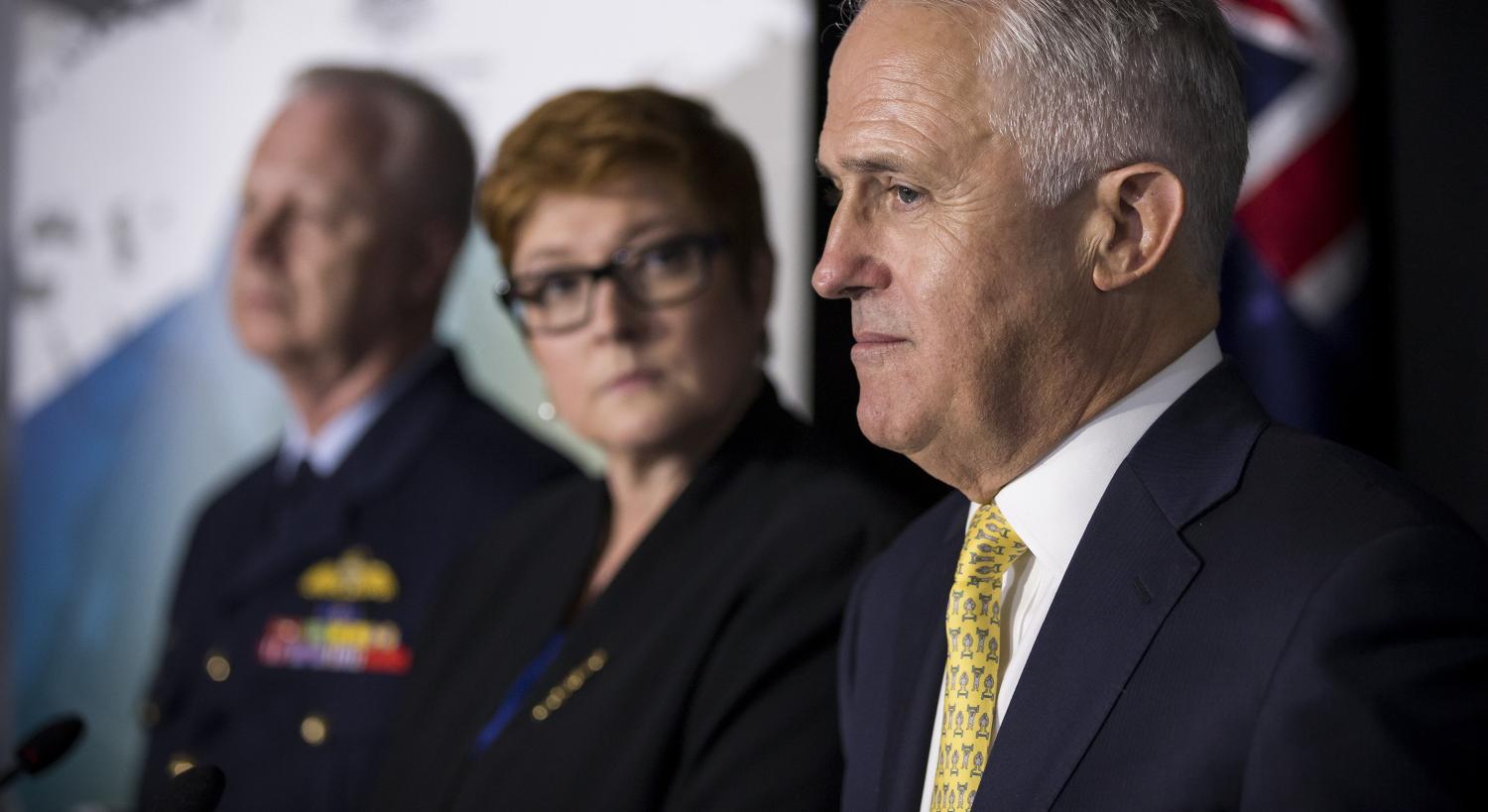In an ideal world, strategic guidance determines force acquisition decisions, which are in turn made according to budget priorities. Ministers and ADF chiefs repeat this construct as each successive Defence White Paper is released and analysts ritualistically parse the document for evidence of slippage between guidance, procurement choices and budget realities. It's therefore comforting to note that, in this respect, DWP2016 presents no departure in form.
The promise that $30 billion will be added to the defence budget between now and 2025-26 to fund new generation capability acquisitions is heroic given the timid tone of the 'great tax reform debate' in Australia, and the goal of reaching defence expenditure equivalent to 2% of GDP by 2020-21 is tokenistic at best. The latter commitment seeks to address the reality that Australian defence spending as a proportion of GDP has never been lower than it is today. This is despite the regular warnings about the range of threats confronting Australian security and how dangerous the external strategic environment is becoming in the 21st century. Free riding on major power allies is not new for Australia, and it's alive and well in current defence strategy.
The foundation for any Defence White Paper is its strategic outlook. Like its predecessors, DWP2016 paints a picture of the contemporary strategic environment at the global and regional levels and looks out two decades hence for likely trends and developments. The assessments contained in DWP2016 should come as no surprise to anyone who has been following the bouncing ball of Australia's strategic discourse since DWP2013. Predictably, 'the US will remain the pre-eminent military power over the next two decades', China's growing material power 'will have a major impact on the stability of the Indo-Pacific to 2035', and challenges from terrorism and space and cyber space threats will continue to vex policy makers.
What is new — refreshingly so, in this author's view — is a strong emphasis on the so-called 'rules-based global order' that underpins Australia's security and prosperity. Essentially, this refers to international and regional governance mechanisms, but it also signifies a commitment to a series of norms about what is acceptable conduct in international relations.
What's interesting is that DWP2016 prioritises this discussion immediately following analysis of the US-China relationship in the strategic outlook chapter and before detailed discussion of terrorism and regional military modernisation trends. Rules-based orders are closely linked to multilateral institutions, which non-major powers like because these institutions serve to offset the capacity of major powers to get their way unilaterally. For Australia, maximising structural autonomy for small and middle powers as China rapidly transitions to great power status makes perfect sense. There should be no prizes for guessing the state to which the following refers (on p.45): 'While it is natural for newly powerful countries to seek greater influence, they also have a responsibility to act in a way that constructively contributes to global stability, security and prosperity'.
Indeed, many will be looking closely at the tone of DWP2016 with respect to China, and it's fair to say that the document is tougher rhetorically on China's conduct as a major power than DWP2013 and even DWP2009, which famously inserted reference to the lack of transparency in China's military modernisation agenda. DWP2016 catalogues recent developments in PLAN and PLAAF acquisitions, noting that 'it will be important for regional stability that China provides reassurance to its neighbours by being more transparent about its defence policies' (p.42).
The White Paper also employs some fairly pointed language regarding Beijing's recent activities in the South China Sea: 'Australia is particularly concerned by the unprecedented pace and scale of China's land reclamation activities' (p.58). [fold]
While some will no doubt portray this direct language as inappropriate given Australia's trade interests with China, it reflects growing concern in the region more broadly about Beijing's increasingly belligerent posture. More to the point, it sends a message that Australia will never accept as legitimate any attempt to restrict freedom of navigation in a maritime zone that carries nearly two-thirds of the country's total trade volume.
DWP2016 contains some notable flaws in its strategic assessment. The most obvious is the characterisation of international terrorism, which is said to be 'growing as a threat to Australia's security and interests' (p.46). Evidence furnished to support this claim is an increase in 2013-2014 in the quantity of attacks of deaths resulting from terrorist attacks. But the overwhelming majority of attacks and deaths resulting from terrorism continue to be confined to a small number of failed or failing states where suicide bombings are prevalent — the big four remain Iraq, Afghanistan, Syria and Pakistan. In the overall scheme of threats to Australia, terrorism will remain marginal.
Finally, the strategic assessment in relation to weapons of mass destruction (pp.64-65) oddly omits to mention North Korea's acquisition of nuclear weapons and the growing range of its missile forces, instead choosing to focus on Syria's chemical weapons stockpile. The day is approaching when Pyongyang will be able to arm and launch an inter-continental ballistic missile with a nuclear device, and Australian strategists must be well aware that any North Korean missile capable of hitting the west coast of the US will by definition be able to strike Australia.
Photo courtesy of Australian Defence Image Library
